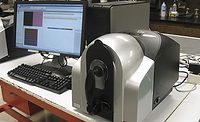German RAL Color Sets the Standard for Color Measurement

RAL Classic - A Basic Color Collection
The four-digit RAL Colors have been the standard for choosing colors in Europe for more than 70 years. The system is also currently being used in the United States. In the beginning, the color collection contained 40 different colors. Today, the number has risen to more than 200. The basic collection for matte finish colors is RAL 840-HR, and the gloss-finish version is RAL 841-GL. These basic color collections cover a range of applications, and are being used by a number of companies and institutions. They are even of common interest in special cases. Both collections are used as color samples for designers. They also contain safety and signaling colors, and conform to German Standard color requirements and ISO regulations.RAL Design System - Creating Harmonic Color Combinations
The RAL Design System has been developed for professional color design. It contains 1,688 colors arranged systematically. The difference between these and RAL Classic colors is that the RAL Design System colors are not arranged arbitrarily; the seven-digit color references indicate the colors’ values of hue, lightness and chroma (HLC). These values are measured by spectrophotometric devices that are standard for all color measurement; therefore, the codes are understood universally among professionals who work with color — a significant advantage over other color systems. For example, RAL 210 60 30 is a color shade with a hue of 210, lightness of 60 and chroma of 30. If combining this color shade with a lighter one is necessary, users can choose RAL 210 70 30. This would create a color with the higher lightness 70, but the other two features of the color would remain the same. With this system, the creation of harmonic color combinations becomes easy.
RAL Digital - On-Screen Color Pallets
As the use of CAD and designer software became more widespread among architects and designers, it was necessary to offer RAL colors for this software. In order to import all the colors into CAD and designer programs, the RAL Digital software has been developed. After installation, the RAL colors are available on-screen as color pallets with direct access. Therefore, users are able to put color in their design — on screen or paper — using color samples that are independent from paint manufacturers.The second generation of the RAL Digital software makes working with RAL colors on a computer even easier. RAL Classic and RAL Design Colors are imported directly into the most common programs, giving almost 1,900 colors. These colors can be presented in an optimum form on screen or for an output device. An updated list of the supported software and output devices is available directly from RAL.
In addition, there are more helpful programs available on CD-ROM. The digital color atlas shows the presentation of the colors, giving a good overview of the different colors, which helps with selecting colors. Additional software for developing color harmonies or for finding the closest RAL color helps the drawing of color designs.
For more information on color standards, contact RAL e.V., Siegburger Str. 39, D-53757 Sankt Augustin, Germany; phone +49-2241-1605-0; fax +49-2241-1605-16; visit www. ral-colours.de.
Looking for a reprint of this article?
From high-res PDFs to custom plaques, order your copy today!




